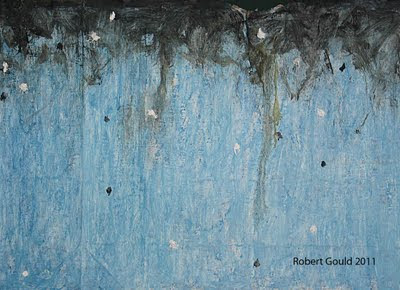 |
| View of New York Harbor from Green-wood Cemetery. Note the sweeping vista that can be scene with out trees. I imagine the view was similar in 1776. During the battle American troops stood on this hill fighting the English troops approaching from the left. In the harbor below they would have seen English Navy ships. |
 |
| Modern view shot with a 5X7 pinhole. Note the original image was taken from the roadway. The bottom of this image. I chose a higher vantage point on the hill over the roadway. |
I was able to get over to Green-wood Cemetery a day or two before hurricane Irene struck. The timing of the hurricane couldn't have been worse. It totally disrupted all the "Battle of Long Island" anniversary events that were planned for that weekend. This Cemetery hosts numbers events connected to the battle that took place on its grounds.This year I had made plans to attend for the first time. The hurricane further reinforces my belief that every time
I make elaborate plans to visit battlefields, it will rain. So, sorry everyone. Just blame me.
 |
| Holga wide angle pinhole. |
My goals for this visit was to find a location of a wet collodion photo, the top image, that is part of the Brooklyn Museum's collection that they have been posting on line. Anyone with interest in early photographs of Brooklyn should check out the Museums Flicker
page. Its a gorgeous image showing the view from
Mount Green-wood, with boats in the not too distant harbor, circa 1870's. Seeing the view, I had a general idea of were the photograph was taken from. I hoped the two mausoleums in the foreground were still there. I could use them to help frame the shot, matching up with the original. Sure enough approaching
battle hill from the road below, I could see a row of mausoleums dug into the hill side above. I parked and set off to find the mausoleum with the prominent keystone in the arched facade. It didn't take long to find a match. The problem was I couldn't see my computer screen well enough in the bright sun light. So I could not make an precise match up. Another factor is a large tree that has grown up within the last hundred plus years. Viewed from the original angle, it blocks a direct view of the harbor. Moving to the right I was able to see clear through to the water. I then moved much farther to the right for a wider view. In comparing the two views, I can see sailing ships and small boats in the original. A hundred years ago, New York harbor was the I-95 of its day. Today the same view is of oil barges, tankers, and container ships from China.
 |
| Holga 120N Fuji 100ASA with red filter. Maybe the strap got in the way? |
 |
| Holga 120N Fuji 100ASA with red filter. |
 |
| New York Harbor view, Green wood cemetery. |
 |
| View of lower Manhattan. Holga 120N with red filter. |
Later, I got some shot's of the view from the summit of "Battle Hill".
Thanks to Brooklyn Museum and Green-wood Cemetery.
http://www.flickr.com/photos/brooklyn_museum/sets/72157626969124086/
http://www.green-wood.com/























































